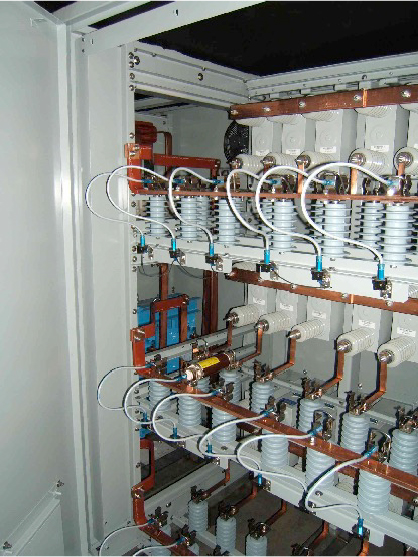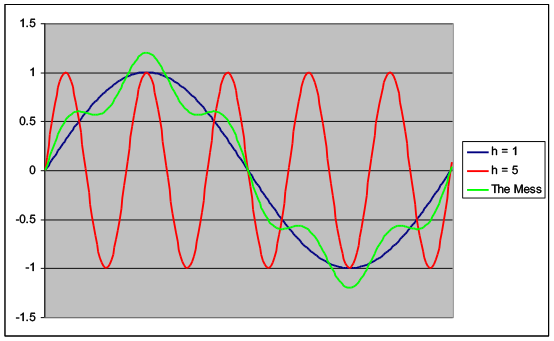
Over thirty-five years ago, almost all loads were linear, with the current waveform closely matching the sinusoidal source voltage waveform and changing in proportion with the load. In recent years, the use of non-linear loads has increased dramatically. A non-linear load changes the sinusoidal nature of the AC power current thereby resulting in the flow of harmonic currents in the AC power system that can cause interference with communications circuits and other types of equipment. Any load that draws a non-sinusoidal current wave when supplied by a sinusoidal voltage source is classified as a non-linear load.
Any DC load that has a low time constant (low inductance), such as a DC motor, does not draw ripple-free current. The harmonics in the voltage wave produce significant ripple currents in the DC current wave. The harmonics are related to the pulse number of the converter circuit: six-pulse generates 6th harmonic ripple and 12-pulse generates 12th harmonic ripple.
The emergence of renewable, alternate energy sources has resulted in the use of many varied topologies as power conditioners or inverters for utility tied operations. Inverters are available in single-phase and three-phase units and their outputs may be very clean sinusoids with near unity power factor or may contain various characteristic and non-characteristic harmonics and power factors that may cause unacceptable power quality on the electric utility grid.
Our Services:
- Power Quality Survey
- Parallel Resonant Frequency Analysis
- Fundamental Frequency Analysis
- Harmonic Load Flow Analysis
- Equipment Bid Specifications
IEEE Recommended Practices and Requirements for Harmonic Control in Electrical Power Systems is IEEE Std 519-2022.

The presence of harmonic frequencies which change the AC waveform from sinusoidal to complex
Some notable effects of harmonics on motors, generators, transformers and other electronic equipment include:
- increased heating due to conductor and lamination losses at the harmonic frequencies thus affecting the machine efficiency
- result in higher audible noise emission as compared with sinusoidal excitation
- affect the torque developed by producing a flux distribution in the air gap, which can cause or enhance cogging (refusal to start smoothly) or crawling (very high slip) in induction machines
- increase in the transformer heating (increased temperature rise) as compared to purely sinusoidal operation
- increase in conductor losses and stray flux losses
- shifting of the voltage zero crossing or the point at which one phase-to-phase voltage becomes greater that another phase-to-phase voltage
- harmonic currents can greatly increase heating and losses in switchgear, thereby reducing the current carrying capability and in some instances shortening the life of some insulating components
- relays exhibit a tendency to operate slower and / or with higher pick-up values, rather than operate faster and / or with lower pickup values when harmonics are present
Other types of electronic equipment can be affected by transmission of AC harmonics through the equipment power supply or by magnetic coupling of harmonics into equipment components … computers and programmable controllers require AC sources that have no more than a 5 % distortion factor, with the largest single harmonic being no more than 3 % of the fundamental component.
When power factor correction, in the form of power capacitor banks, is used with a non-linear load, parallel resonant conditions can occur that may result in high levels of harmonic current distortion and harmonic voltage distortion when the resonant condition occurs at a harmonic frequency associated with the non-linear load.

